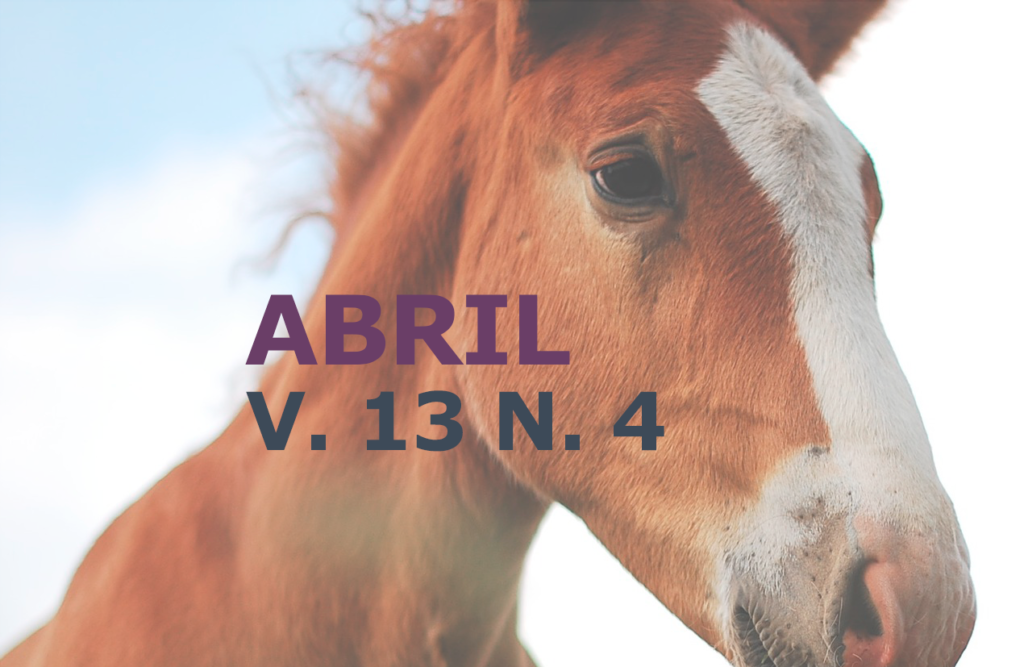Caracterização clínica, laboratorial e patológica de equino naturalmente acometido por acidente botrópico
DOI:
https://doi.org/10.31533/pubvet.v13n4a309.1-8Palavras-chave:
acidente botrópico, avaliação laboratorial, clínica de equinos, necropsiaResumo
Os equinos são animais consideravelmente mais sensíveis ao veneno de ofídios em comparação a outras espécies de animais domésticos. Objetivou-se com o trabalho caracterizar os achados clínicos, laboratoriais e patológicos de um equino atendido no Hospital Veterinário Universitário Prof. Dr. Ivon Macêdo Tabosa da Universidade Federal de Campina Grande – Campus Patos – PB, acometido por acidente botrópico. Como na maioria dos casos a serpente envolvida não pode ser visualizada o diagnóstico depende, fundamentalmente, do conhecimento prévio do quadro clínico-patológico instalado. Evidenciou-se a presença de distúrbio de coagulação (trombocitopenia, hemorragia e aumento do tempo de coagulação sanguínea), falha renal (marcada elevação de ureia e creatinina), hepática (diminuição de albumina e globulina) e dano muscular (considerável aumento de Lactato Desidrogenase e Creatina Quinase). Além dos sinais clínicos e achados laboratoriais que evidenciavam acidente botrópico, pode-se verificar em necropsia a presença de edema no membro acometido por duas perfurações simétricas e presença de alterações de coagulação em diversos órgãos como glote, diafragma e estômago. Percebe-se que o conhecimento dessas alterações é de relevante importância ao clínico auxiliando na elucidação do diagnóstico de animais acometidos por acidentes botrópicos, tendo em vista que o tempo é primordial na elaboração de um protocolo emergencial.
Downloads
Publicado
Edição
Seção
Licença
Copyright (c) 2019 Laura Honório de Oliveira Tolentino, Mikael Leandro Duarte de Lima Tolentino, Daniel de Medeiros Assis, Millena de Oliveira Firmino, Márcio Eduardo de Melo Benvenutti, Eldinê Gomes de Miranda Neto, Antônio Flávio Medeiros Dantas, Antônio Fernando de Melo Vaz

Este trabalho está licenciado sob uma licença Creative Commons Attribution 4.0 International License.
Você tem o direito de:
Compartilhar — copiar e redistribuir o material em qualquer suporte ou formato
Adaptar — remixar, transformar, e criar a partir do material para qualquer fim, mesmo que comercial.
O licenciante não pode revogar estes direitos desde que você respeite os termos da licença. De acordo com os termos seguintes:
Atribuição
— Você deve dar o crédito apropriado, prover um link para a licença e indicar se mudanças foram feitas. Você deve fazê-lo em qualquer circunstância razoável, mas de nenhuma maneira que sugira que o licenciante apoia você ou o seu uso. Sem restrições adicionais
— Você não pode aplicar termos jurídicos ou medidas de caráter tecnológico que restrinjam legalmente outros de fazerem algo que a licença permita.





